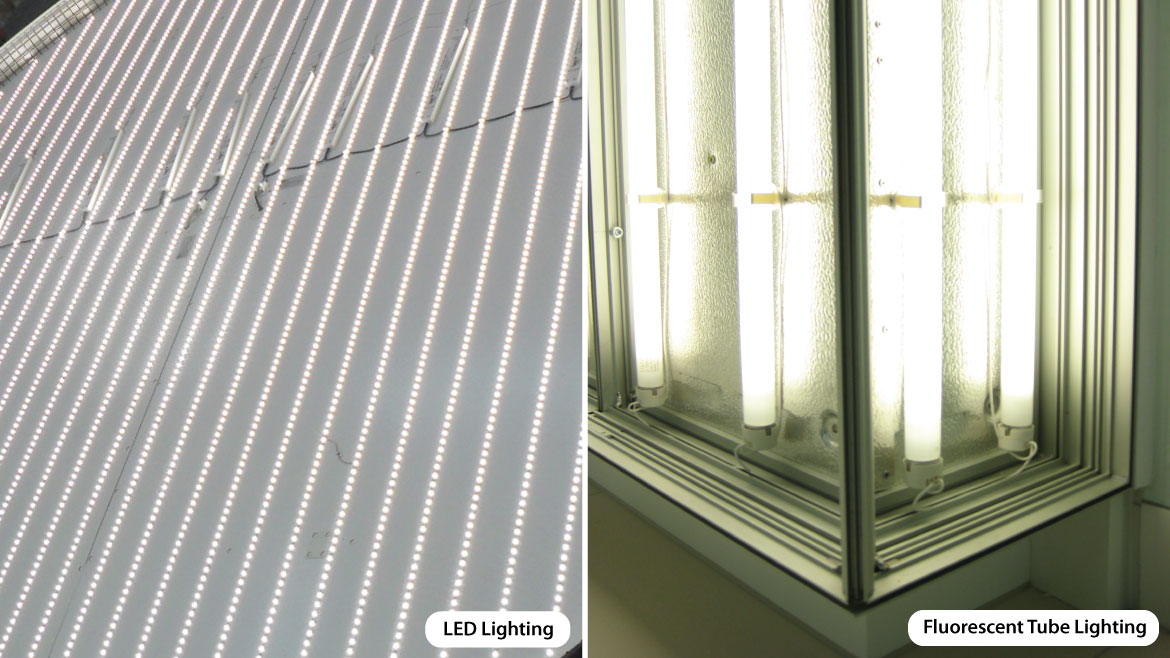Discuss the use of LED lighting over fluorescent tubes in regards to the additional outlay against long term energy savings.
One of the best ways for a retailer or leisure operator to increase footfall and increase brand awareness, is the smart use of illuminated display within their windows. One of the best ways of to do this is with the use of display light boxes which offer eye-catching illumination to promotional and advertising graphics. The use of light boxes as a common illuminated display medium has been established due to the capacity for the graphics to be changed easily by onsite staff and the adaptability of the light boxes in terms of shapes and sizes.
The introduction of edge-lit lighting approximately 7-8 years ago enabled space saving solutions and the contemporary look we’re now used to, with the ultra thin light box, compared to the more traditional deeper backlit light boxes. However, one of the current challenges we have faced has been to reduce energy consumption of the lighting. This has effectively been realised in the last few years by the advances in LED lamps.
LED lamps are now brighter, more stable and offer greater longevity than ever before. They are bright enough to directly replace fluorescent tubes in ultra slim edge-lit light boxes and traditional backlit light boxes and often LED light boxes are even brighter. Also they are not constricted to length in the way fluorescent tubes are, so they not only offer energy savings, but they also improve the quality of lighting in terms of brightness and light distribution, which in turn gives a more attractive illumination to the promotional graphics.
So it sounds like it should be a “no-brainer” W&Co should simply supply all light boxes and illuminated displays with LEDs instead of fluorescent tubes. Unfortunately it is not as simple as that, light boxes that use LEDs are more costly to buy than ones which use fluorescent tubes, even if they are a lot cheaper to run. This leads us to the next challenge, trying to get clients to appreciate that the initial extra outlay can be recouped through much cheaper running costs, often in a 2-3 year period, after which it effectively becomes cheaper. Recently one of our blue-chip retail clients, John Lewis, who had been using our Katana ultra slim light box in their stores, assessed light box costs for their stores and realised that they would be making savings through reduced energy usage within 3 years using LED light boxes instead of T5 fluorescent tubes, despite the higher initial outlay.
On top of this LEDs produce far less heat, which eventually needs to be removed through costly use of air conditioning. They are more robust unlike fluorescent tubes which are very fragile and are more likely to break. They are also better for the environment as fluorescent tubes are hazardous to make and costly to dispose of as they could release mercury gas vapour into the environment.
Therefore, LED illuminated displays are brighter and offer better quality lighting for promotional graphics in comparison to fluorescent tube illuminated displays. They are also, despite the relatively small additional outlay, a more cost effective solution in the long term offering substantial energy savings, up to 60-80%, and are a better all round solution for the environment.
For more information about the light boxes discussed, see www.w-co.co.uk/lightboxes
